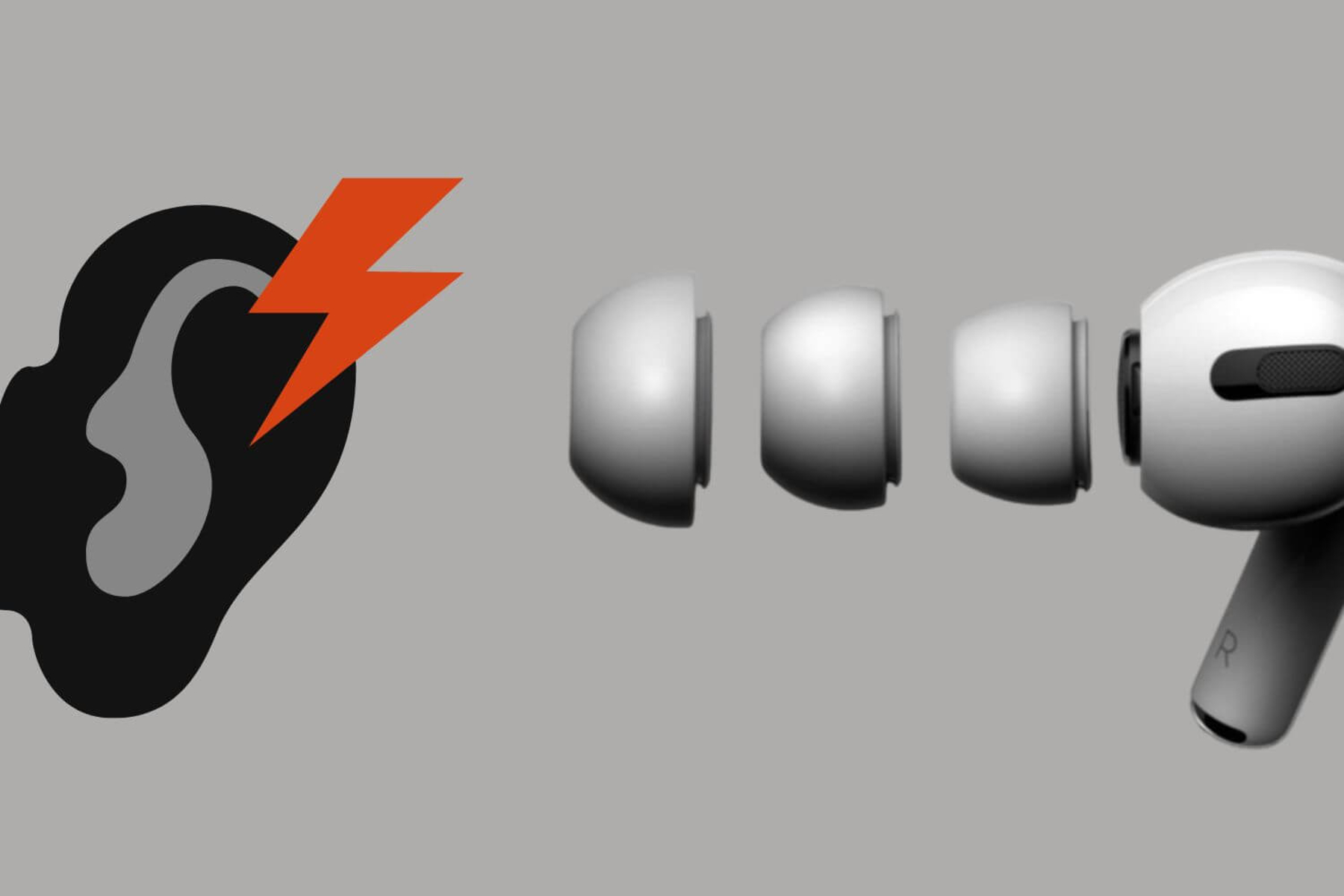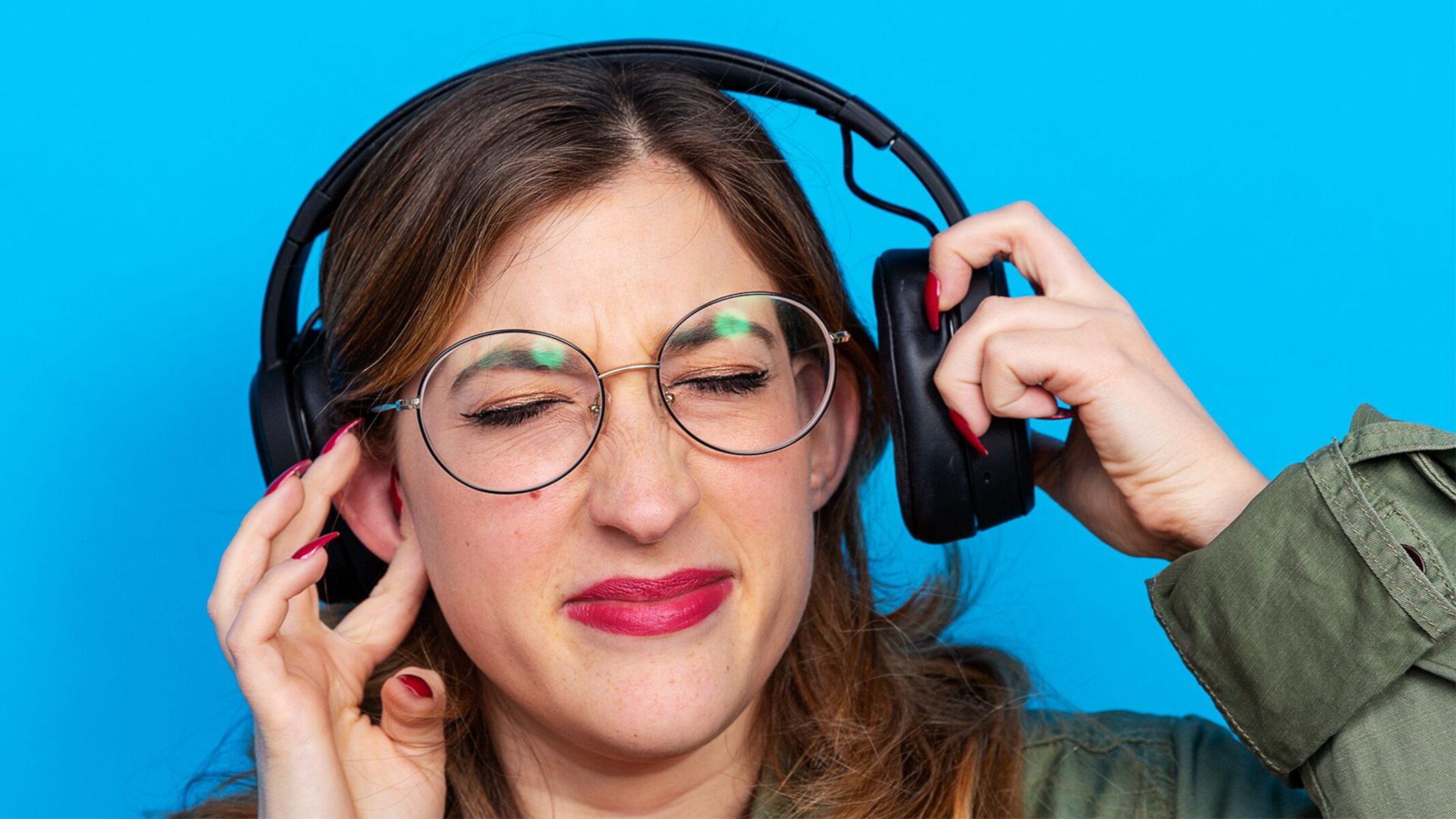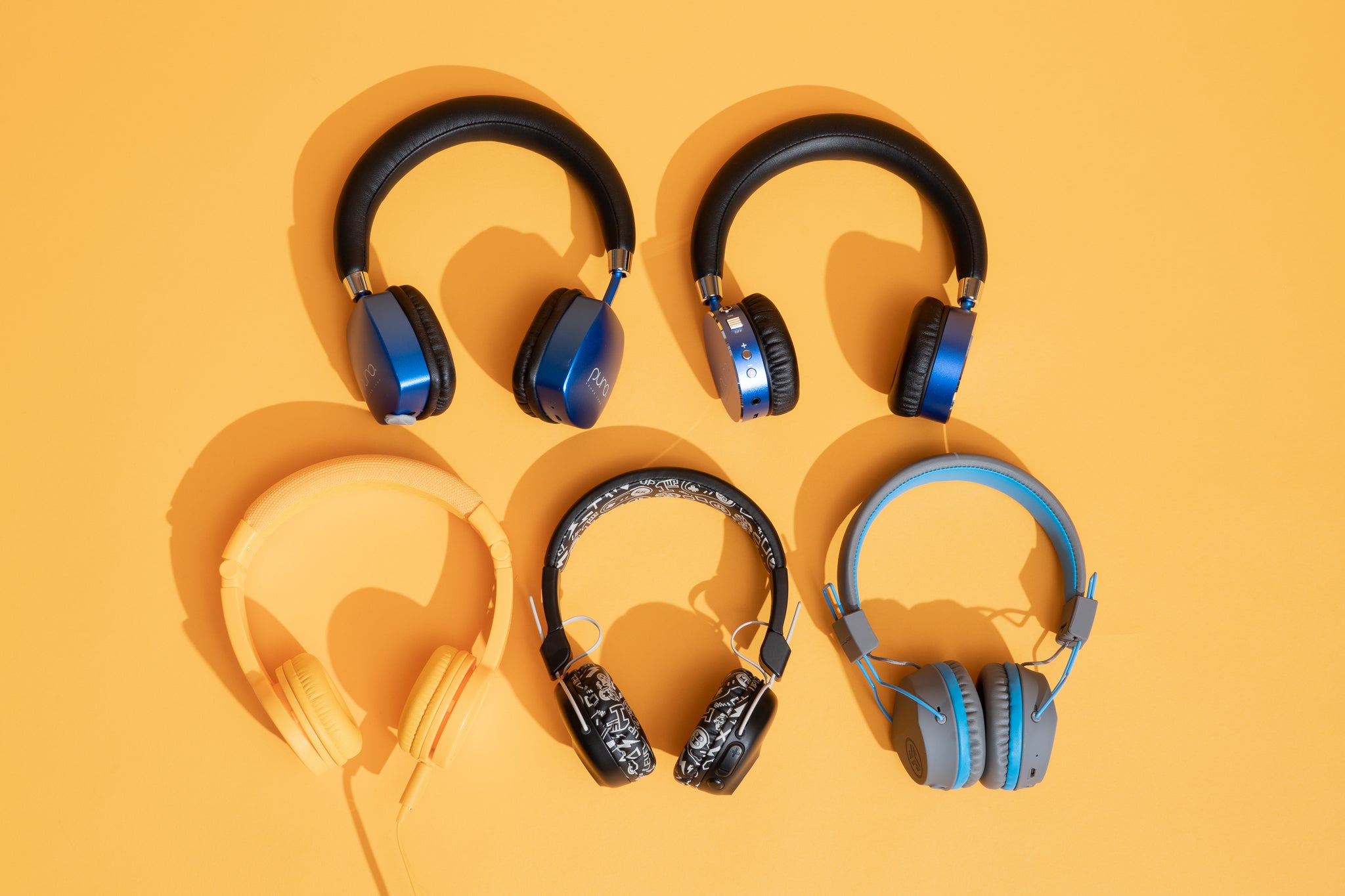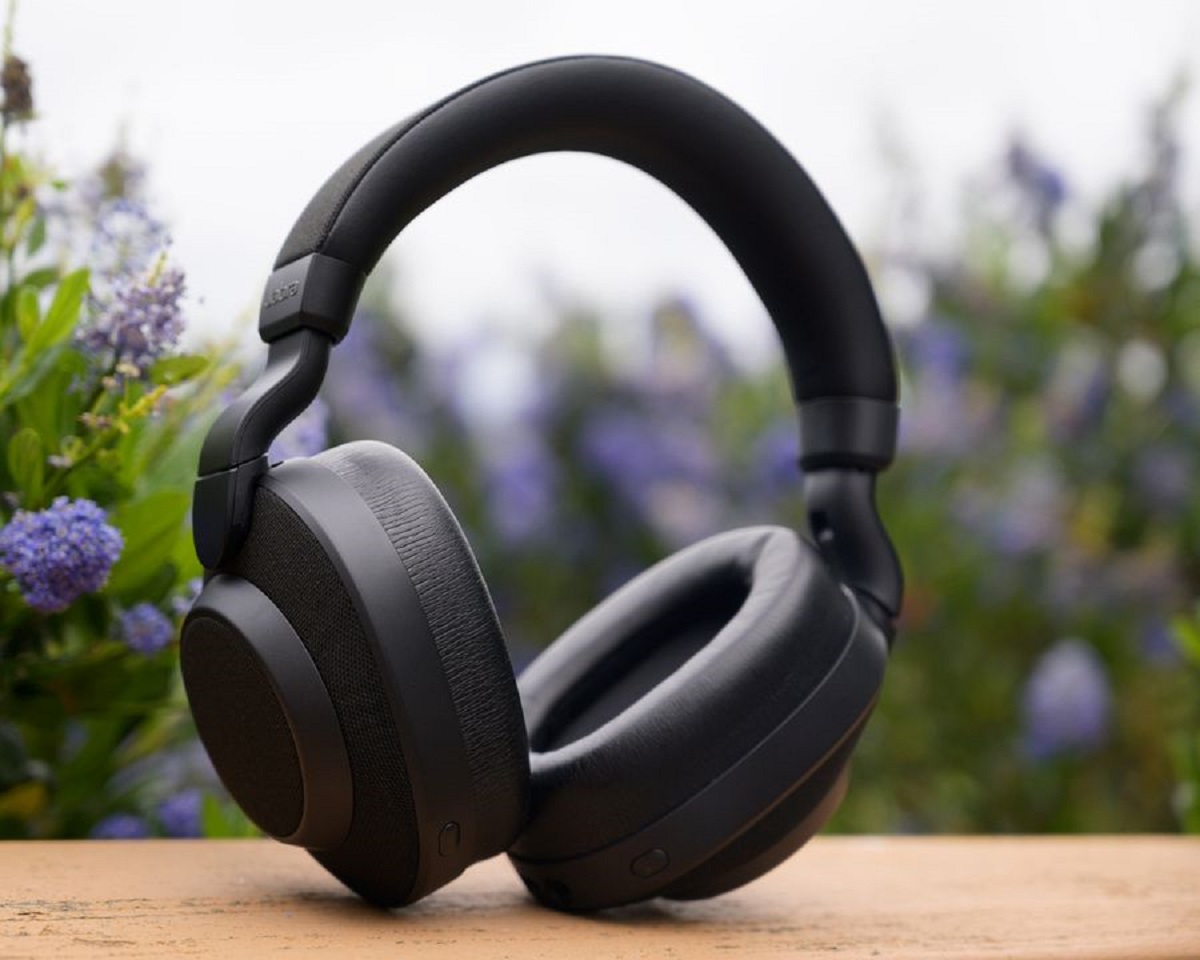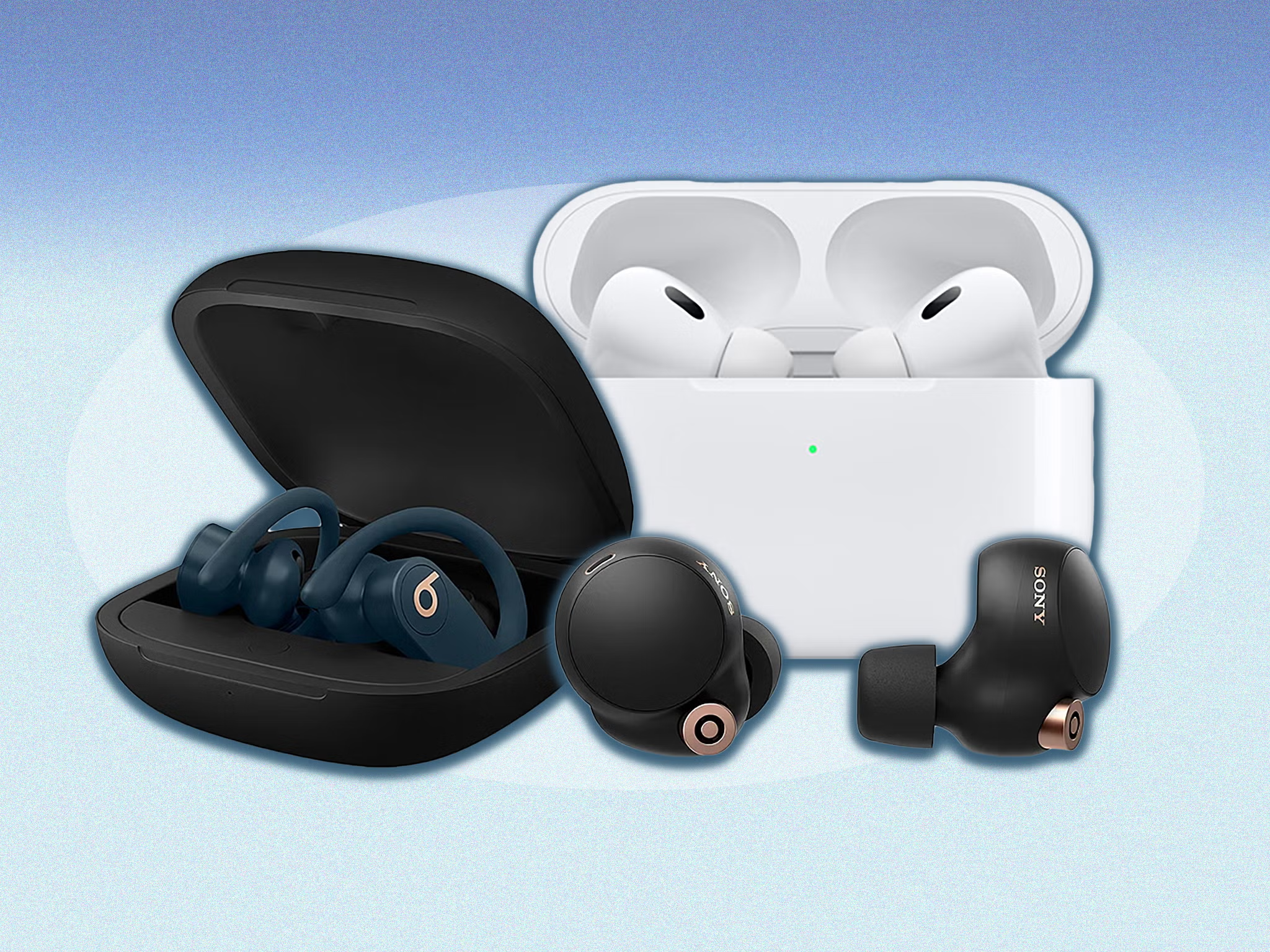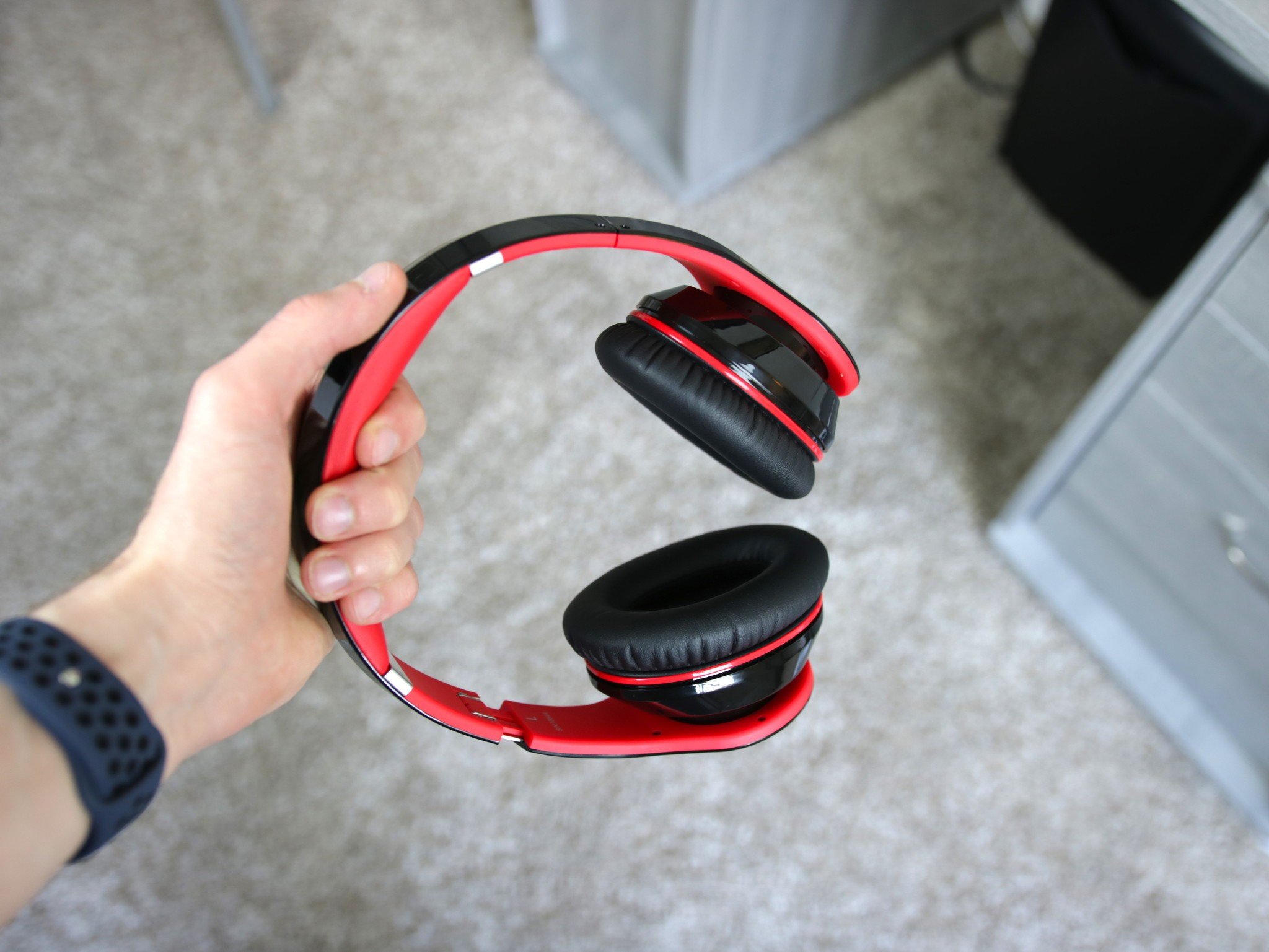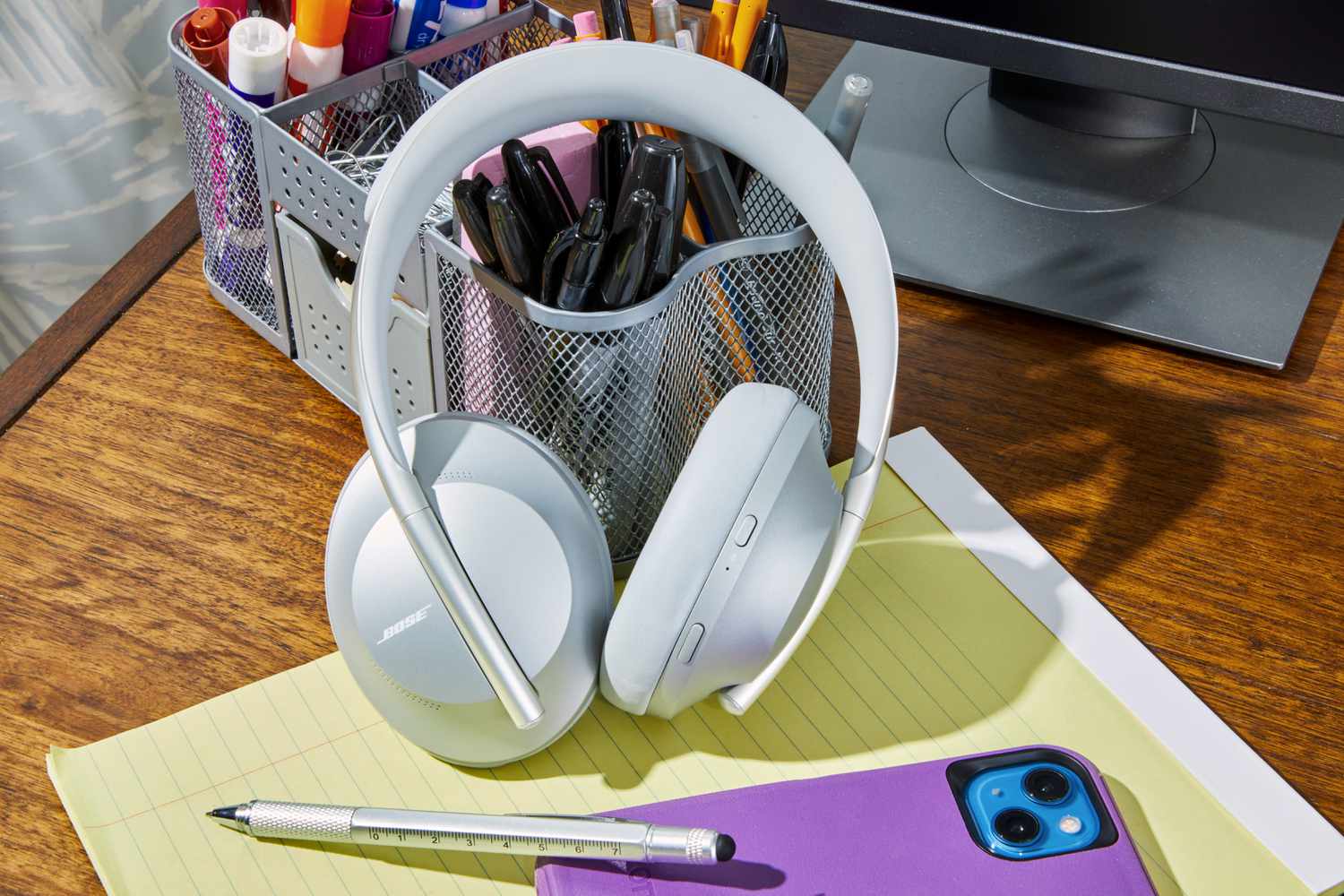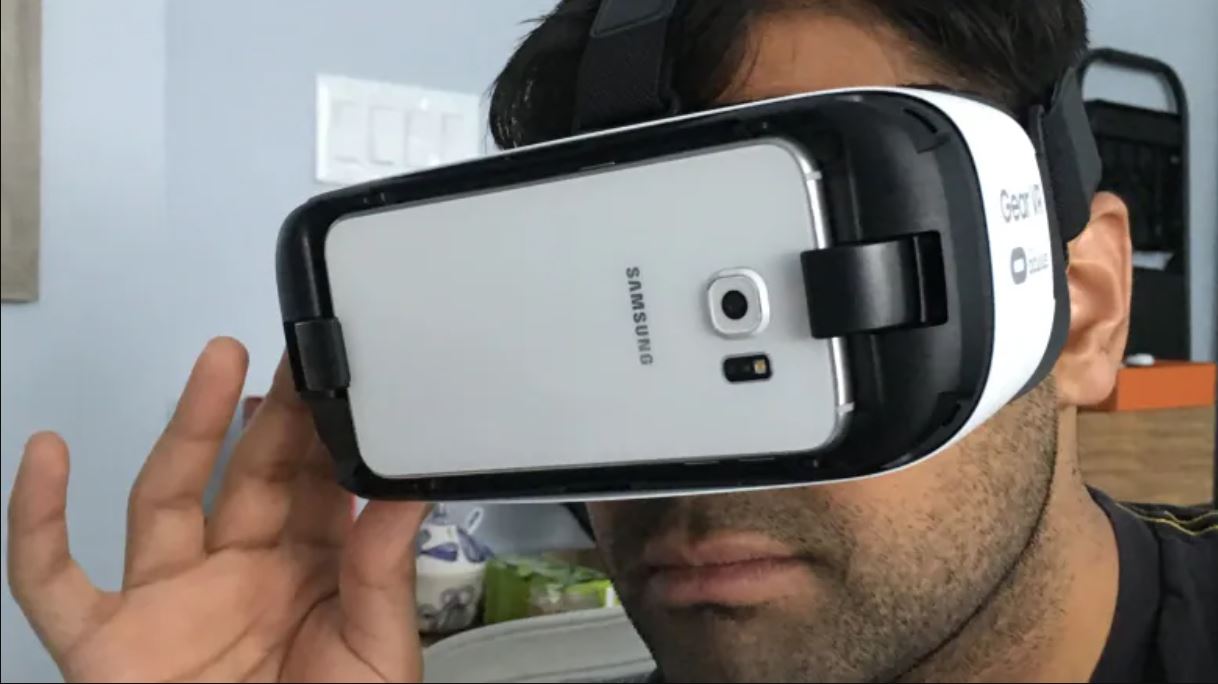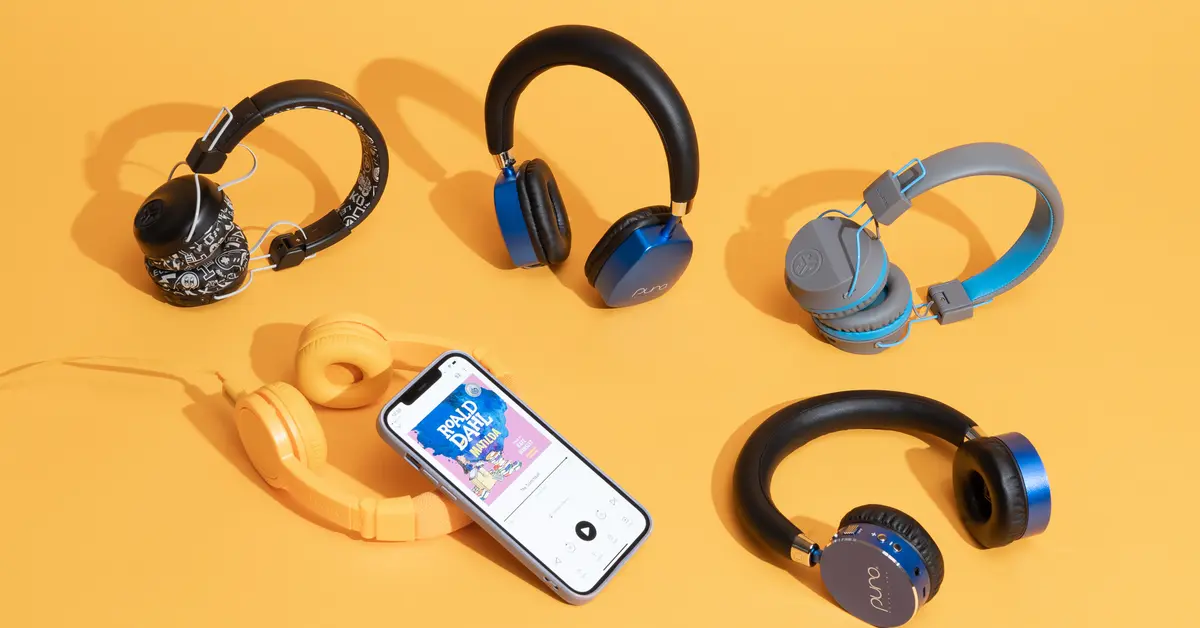Introduction
Noise cancellation technology has become a prominent feature in today’s headphones, providing a blissful escape from the hustle and bustle of our surroundings. By blocking out external sounds, noise cancellation creates a peaceful and immersive listening experience. However, some users have reported experiencing discomfort or even pain while using noise cancellation headphones. In this article, we will explore the reasons behind why noise cancellation can hurt our ears and provide tips to alleviate any potential discomfort.
First, let’s understand how noise cancellation actually works. Noise cancellation headphones utilize advanced technology to combat unwanted external noises. They employ microphones to detect ambient sounds and then generate sound waves that are out of phase with the incoming noise. When these out-of-phase sound waves combine with the original sound waves, they cancel each other out, effectively reducing the overall noise level that reaches our ears.
Despite the benefits of noise cancellation, some individuals may experience discomfort or pain when using these headphones. The reasons for this can vary from person to person, depending on factors such as individual sensitivity, exposure duration, and specific frequencies being canceled. It’s important to note that while discomfort may be common for some, it does not mean that everyone will experience the same issues.
In the following sections, we will delve into the key factors that can contribute to discomfort while using noise cancellation headphones. By understanding these factors, individuals can make informed decisions about their headphone usage and take steps to mitigate any potential negative effects on their ears.
How does noise cancellation work?
Noise cancellation technology is a remarkable advancement in the field of audio technology. It works by utilizing sophisticated algorithms and built-in microphones to counteract or block unwanted external noise. Understanding how this technology operates can shed light on the potential impact it can have on our ears.
When you switch on noise cancellation mode on your headphones, the built-in microphones start picking up the sounds in your environment. These microphones capture the external noises, which can range from the rumbling of a train to the hum of an air conditioner.
Once the microphones have detected the ambient noise, the noise cancellation circuitry inside the headphones analyzes the sound waves and generates an opposite sound wave. This generated sound wave, also known as the anti-noise, is perfectly out of phase with the original background noise.
The anti-noise sound wave is then played through the headphone speakers simultaneously with the original sound. When these two sound waves meet, they interfere with each other, resulting in a cancellation of the original noise. The net effect is a significant reduction in the amount of external noise that reaches your ears.
It’s important to note that noise cancellation technology is most effective at canceling out continuous, low-frequency sounds. These include sounds like the drone of an airplane engine or the rumble of a busy street. Noise cancellation may not be as effective with sudden, high-frequency sounds, such as a loud clap or a sudden burst of laughter.
Another aspect of noise cancellation technology that’s worth mentioning is active noise cancellation (ANC) and passive noise isolation. ANC employs the use of circuitry and algorithms to cancel out external noise, while passive noise isolation aims to physically block out noise by using well-sealed ear cups or ear tips.
Understanding how noise cancellation works forms the foundation for exploring the impact it can have on our ears. In the next section, we will look at the potential discomfort or pain that some users may experience while using noise cancellation headphones.
The impact of noise cancellation on the ears
Noise cancellation technology offers a plethora of benefits, such as reduced stress, improved focus, and enhanced audio quality. However, it’s essential to be aware of the potential impact it can have on our ears.
One common concern is the feeling of discomfort or even pain that some individuals experience while using noise cancellation headphones. This discomfort can occur due to several factors related to the way our ears perceive and process sound.
Sensitivity to low frequencies is one factor that can contribute to discomfort. Noise cancellation is most effective at canceling out low-frequency sounds, such as the hum of an engine or the rumble of traffic. However, if the cancellation is too extreme or if the cancellation frequency matches the natural resonant frequency of our ears, it can create a sensation of pressure or discomfort.
On the other hand, high-frequency noises may not be effectively canceled out by noise cancellation technology. While low-frequency sounds are more easily canceled out due to their longer wavelength, high-frequency sounds have shorter wavelengths that are harder to neutralize. As a result, some high-pitched noises may still reach our ears, causing irritation or discomfort.
The acoustic pressure generated by noise cancellation can also potentially contribute to discomfort. Noise cancellation involves generating anti-noise sound waves that interfere with the original noise. This interference can result in changes in the pressure of the sound reaching our eardrums, which can cause a feeling of pressure or tightness in the ears.
It’s important to note that prolonged use of noise cancellation headphones can have potential risks. By blocking out external sounds, noise cancellation can make us less aware of our surroundings, potentially leading to safety concerns. Additionally, using noise cancellation at high volumes for extended periods can increase the risk of hearing damage. It is crucial to use noise cancellation headphones responsibly and take breaks from continuous use.
While some individuals may experience discomfort or pain while using noise cancellation headphones, it is worth mentioning that not everyone will have the same experience. Factors such as individual sensitivity, exposure duration, and specific frequencies being canceled can vary from person to person.
In the next section, we will explore some of the potential causes of discomfort or pain that can arise when using noise cancellation headphones.
Causes of discomfort or pain while using noise cancellation headphones
While noise cancellation technology can provide a serene listening experience, some individuals may experience discomfort or pain while using noise cancellation headphones. Let’s take a closer look at some possible causes of this discomfort:
Sensitivity to low frequencies: Noise cancellation is most effective at canceling out low-frequency sounds. However, if the cancellation is too extreme or if the cancellation frequency matches the natural resonant frequency of our ears, it can lead to a feeling of pressure or discomfort.
High-frequency noises: Noise cancellation technology may not be as effective for canceling out high-frequency noises. These sounds have shorter wavelengths and can be harder to neutralize. As a result, some high-pitched noises may still reach our ears, causing irritation or discomfort.
Acoustic pressure: The interference created by noise cancellation can result in changes in the pressure of the sound reaching our eardrums. This shift in pressure can cause a feeling of pressure or tightness in the ears, leading to discomfort.
Improper fit: Ill-fitting headphones or earbuds can cause discomfort. If the headphones are too tight or too loose, they can create pressure points or fail to create an effective seal, affecting the overall wearing comfort.
Extended use: Prolonged use of noise cancellation headphones can lead to discomfort or pain. In some cases, wearing headphones for long periods can cause ear fatigue or contribute to earaches. Taking regular breaks from using noise cancellation headphones can help alleviate these issues.
Individual sensitivity: Each individual has a unique sensitivity to sound and pressure changes. Some individuals may be more susceptible to discomfort or pain while using noise cancellation headphones due to their specific physiological characteristics.
It’s important to note that while these factors can contribute to discomfort, not everyone will experience the same issues. The impact of noise cancellation can vary from person to person, and it’s essential to listen to your body and adjust your headphone usage accordingly.
In the next section, we will discuss the specific impact of sensitivity to low frequencies and high-frequency noises on discomfort while using noise cancellation headphones.
Sensitivity to low frequencies
One of the causes of discomfort while using noise cancellation headphones is sensitivity to low frequencies. While noise cancellation technology aims to cancel out low-frequency sounds, it can sometimes create a feeling of pressure or discomfort in individuals who are particularly sensitive to these frequencies.
The cancellation of low-frequency sounds relies on generating anti-noise that is out of phase with the incoming noise. When the anti-noise combines with the original sound wave, they interfere and cancel each other out. However, if the cancellation is too strong or if the cancellation frequency matches the natural resonant frequency of our ears, it can lead to an uncomfortable sensation.
Our ears have natural resonant frequencies, similar to how a musical instrument has its own specific resonant frequencies. These resonant frequencies can vary from person to person and are affected by factors such as ear canal shape and individual physiology. When the cancellation frequency matches the resonant frequency of our ears, it can create a sensation of pressure, fullness, or discomfort.
Individuals who are particularly sensitive to low frequencies may experience more pronounced discomfort. This sensitivity can be influenced by a range of factors, including age, hearing health, and previous exposure to loud sounds. It’s worth noting that even individuals with normal hearing can still be sensitive to low frequencies, as this sensitivity is not solely dependent on hearing ability.
To alleviate discomfort related to sensitivity to low frequencies when using noise cancellation headphones, there are a few steps you can take:
- Adjust the noise cancellation level: Some noise cancellation headphones provide customizable settings that allow you to adjust the level of cancellation. Experimenting with different levels can help find a balance that is comfortable for you.
- Take breaks: If you start to feel discomfort, consider taking regular breaks from using noise cancellation headphones. Allowing your ears to rest and adjust to natural sounds can help alleviate any discomfort caused by cancellation frequencies.
- Try different headphone models: If you find that a particular model of noise cancellation headphones consistently causes discomfort, it may be worth exploring other options. Different headphone designs and technologies can have varying effects on sensitivity to low frequencies.
- Consult with an audiologist: If your sensitivity to low frequencies is causing significant discomfort while using noise cancellation headphones, it may be helpful to consult with an audiologist. They can conduct hearing tests and provide personalized recommendations based on your specific needs.
Understanding your sensitivity to low frequencies and adopting appropriate measures can help enhance your comfort while using noise cancellation headphones. In the next section, we will delve into high-frequency noises and their impact on discomfort when using noise cancellation technology.
High-frequency noises and its impact on the ears
While noise cancellation technology is effective at reducing low-frequency sounds, it may not be as effective in canceling out high-frequency noises. High-frequency sounds have shorter wavelengths, making them more challenging to neutralize completely. As a result, some high-pitched noises may still reach our ears, potentially causing discomfort or irritation.
High-frequency noises can range from the shrill chirping of birds to the sharp clinking of utensils. These sounds can be more noticeable when using noise cancellation headphones, especially if they are not completely blocked out by the cancellation technology. The presence of these high-frequency noises can be bothersome to individuals sensitive to such frequencies, leading to discomfort or even pain.
Our ears are capable of perceiving a wide range of frequencies, from the deep rumbles of bass notes to the high-pitched squeaks. However, our sensitivity to different frequencies can vary from person to person. Some individuals may have an elevated sensitivity to high frequencies, making them more prone to experiencing discomfort when these frequencies are not adequately canceled out by noise cancellation technology.
It’s important to note that while noise cancellation technology can reduce high-frequency noises, it may not eliminate them entirely. The effectiveness of canceling out high-frequency sounds can vary depending on the design and quality of the headphones, as well as the specific frequencies being canceled. Understanding these limitations can help manage expectations and minimize potential discomfort.
If you find that high-frequency noises are causing discomfort when using noise cancellation headphones, there are a few steps you can take:
- Ensure a proper fit: Properly fitting headphones can provide a better seal, effectively blocking out more external sounds, including high-frequency noises.
- Experiment with different headphone models: Different headphone models may prioritize the cancellation of specific frequency ranges. Exploring different options can help find a model that better suits your needs and mitigates discomfort caused by high-frequency noises.
- Use supplementary earplugs: In situations where high-frequency noises persist despite noise cancellation technology, using additional earplugs designed to reduce high-frequency sounds can provide added protection.
- Lower the volume: High-frequency noises can be perceived as more jarring at higher volumes. Lowering the volume level on your headphones can help reduce discomfort and ease the impact of these noises.
Awareness of the potential impact of high-frequency noises and implementing appropriate measures can help create a more comfortable listening experience while using noise cancellation headphones. In the next section, we will discuss how acoustic pressure can contribute to discomfort and pain.
Acoustic pressure and its effect on discomfort
When using noise cancellation headphones, the generation of anti-noise and the cancellation of external sounds can result in changes in the acoustic pressure that reaches our ears. This shift in pressure can have an effect on our perception and may contribute to feelings of discomfort or pain.
The interference between the original sound wave and the generated anti-noise can create regions of increased and decreased pressure in the ear canal. This variation in acoustic pressure can cause sensations of pressure, tightness, or fullness in the ears, leading to discomfort for some individuals.
Not everyone is equally sensitive to changes in acoustic pressure, and the discomfort experienced can vary from person to person. Factors such as individual physiology and previous exposure to loud sounds can influence our sensitivity to pressure changes.
It’s worth noting that the discomfort caused by changes in acoustic pressure is typically temporary and subsides once the noise cancellation is turned off or when the headphones are removed. However, prolonged exposure to high-pressure levels or uncomfortable sensations can lead to ear fatigue or contribute to earaches.
To mitigate discomfort related to acoustic pressure when using noise cancellation headphones, here are a few steps you can take:
- Take breaks: Giving your ears regular breaks from noise cancellation can help reduce the cumulative effect of prolonged exposure to changes in acoustic pressure.
- Adjust the noise cancellation level: Some headphones allow you to adjust the level of cancellation. Reducing the cancellation level can help alleviate discomfort caused by various pressure changes.
- Try different headset designs: Different headphone designs can affect the way pressure changes are perceived. Experimenting with different designs, such as over-ear or in-ear headphones, can help find a more comfortable option.
- Consult with a healthcare professional: If you consistently experience discomfort related to changes in acoustic pressure, consulting with an audiologist or healthcare professional can provide valuable insights and personalized recommendations.
Being aware of the potential effects of acoustic pressure and implementing strategies to mitigate discomfort can help create a more comfortable experience while using noise cancellation headphones. In the next section, we will discuss the potential risks associated with prolonged noise cancellation headphone use.
Potential risks of using noise cancellation for extended periods
While noise cancellation headphones offer many benefits, it’s important to be mindful of the potential risks associated with prolonged and excessive use. Here are some of the potential risks individuals should be aware of:
Reduced environmental awareness: Noise cancellation technology blocks out external sounds, which can limit your ability to hear important cues from your environment. This reduced awareness can be especially concerning in situations where you need to be aware of your surroundings for safety purposes, such as when crossing the street or participating in outdoor activities.
Hearing damage: Listening to loud music for extended periods, especially when using noise cancellation, can increase the risk of hearing damage. Noise cancellation may create a false sense of reduced noise, leading to higher volume settings. Prolonged exposure to high volumes can result in irreversible hearing loss or tinnitus.
Dependency on noise cancellation: Relying too heavily on noise cancellation technology may impact your ability to tolerate normal levels of noise in everyday environments. This can make you more sensitive to sounds without the use of noise cancellation headphones, potentially leading to discomfort or increased stress levels.
Ear fatigue and discomfort: Prolonged use of noise cancellation headphones can lead to ear fatigue, discomfort, or earaches. Wearing headphones for an extended period can put pressure on the ear cups or ear tips, resulting in discomfort or pain. Giving your ears regular breaks and using headphones with a comfortable fit can help alleviate these issues.
Psychological effects: Isolating oneself from the surrounding soundscape for prolonged periods can have psychological impacts, such as feelings of detachment or disconnection. In some cases, it may be beneficial to balance noise cancellation usage with regular breaks and exposure to natural sounds.
To minimize the risks associated with prolonged noise cancellation headphone use, here are some tips:
- Limit usage time: Take regular breaks from using noise cancellation headphones to give your ears a rest and to maintain environmental awareness.
- Monitor volume levels: Be mindful of the volume settings when using noise cancellation headphones. Keep the volume at a safe level and resist the temptation to turn it up to compensate for external noise.
- Use noise cancellation selectively: Consider using noise cancellation only in situations where it’s necessary, rather than wearing them continuously throughout the day. This can help reduce dependency and allow for exposure to normal noise levels.
- Choose quality headphones: Invest in high-quality noise cancellation headphones that are comfortable to wear and provide effective noise cancellation without sacrificing sound quality.
- Seek professional advice: If you have concerns about the impact of noise cancellation on your ears, it’s recommended to consult with an audiologist or healthcare professional who can provide personalized recommendations based on your specific needs.
Implementing these measures can help you enjoy the benefits of noise cancellation while minimizing potential risks and discomfort that may arise from extended use of noise cancellation headphones.
Tips to alleviate discomfort while using noise cancellation headphones
Experiencing discomfort while using noise cancellation headphones is not uncommon, but there are measures you can take to alleviate these discomforts and enhance your overall listening experience. Here are some helpful tips:
- Ensure a proper fit: A proper fit is crucial for both comfort and effective noise cancellation. Adjust the headband or ear cups to ensure a snug and comfortable fit. For in-ear headphones, use the appropriate ear tips that create a secure seal without discomfort.
- Take regular breaks: Give your ears regular breaks from wearing noise cancellation headphones. Continuous use can lead to ear fatigue and discomfort. Taking short breaks can allow your ears to rest and readjust to natural sounds.
- Adjust the noise cancellation level: Many noise cancellation headphones offer adjustable settings. Experiment with different levels to find a balance that minimizes discomfort while still providing the desired level of noise reduction.
- Use noise cancellation selectively: Consider using noise cancellation only in environments where it’s essential, such as during flights or in noisy office spaces. Limiting usage in quieter environments can help prevent overexposure to cancellation frequencies and maintain a more natural listening experience.
- Listen at moderate volume levels: Avoid listening to music at excessively loud volumes while using noise cancellation headphones. Prolonged exposure to loud sounds can lead to hearing damage and discomfort. Keep the volume at a level that is comfortable and safe.
- Practice good ear hygiene: Keep your ears clean and dry to prevent any potential discomfort or irritation. Clean your headphones regularly as well to maintain hygiene and prevent the buildup of dirt and debris.
- Consider alternative headphone options: If you consistently experience discomfort while using noise cancellation headphones, you may want to explore alternative options. Different headphones have varying designs and technologies, and it’s possible that a different model may provide a more comfortable fit and better overall experience.
- Consult with an audiologist: If you have persistent discomfort or pain while using noise cancellation headphones, it is advisable to consult with an audiologist. They can assess your hearing health, determine if there are any underlying issues, and provide personalized recommendations to alleviate your discomfort.
By implementing these tips, you can enhance your comfort while using noise cancellation headphones and enjoy a more enjoyable and satisfying listening experience. Remember that everyone’s experience may vary, and it’s important to listen to your body and adjust your headphone usage accordingly.
Conclusion
Noise cancellation technology has revolutionized the way we enjoy audio, providing a means to block out unwanted external noise and immerse ourselves in our favorite music or content. However, it’s important to be aware of the potential discomfort that can arise while using noise cancellation headphones and to take steps to alleviate any discomfort or pain.
In this article, we explored how noise cancellation works, its impact on the ears, and the causes of discomfort that some individuals experience. We discussed factors such as sensitivity to low frequencies, the potential impact of high-frequency noises, the effect of acoustic pressure, and the risks of prolonged usage. Additionally, we provided useful tips to alleviate discomfort, including ensuring a proper fit, taking breaks, adjusting noise cancellation levels, and seeking professional advice if needed.
It’s important to remember that everyone’s experience with noise cancellation headphones may differ. Factors such as individual sensitivity, exposure duration, and headphone fit can influence the level of comfort or discomfort experienced. Being mindful of your own body’s cues and adjusting your usage accordingly can help create a more enjoyable listening experience while minimizing potential discomfort.
While noise cancellation technology can greatly enhance our listening pleasure, it’s essential to strike a balance between utilizing this technology and maintaining awareness of our surroundings. It’s important to use noise cancellation responsibly, especially in situations where environmental awareness is crucial for safety.
By being informed, understanding the potential risks, and implementing the suggested tips, you can make the most of your noise cancellation headphones while prioritizing your comfort and well-being. Enjoy the blissful escape that noise cancellation offers, knowing that you are taking steps to alleviate any discomfort and protect your hearing health.







